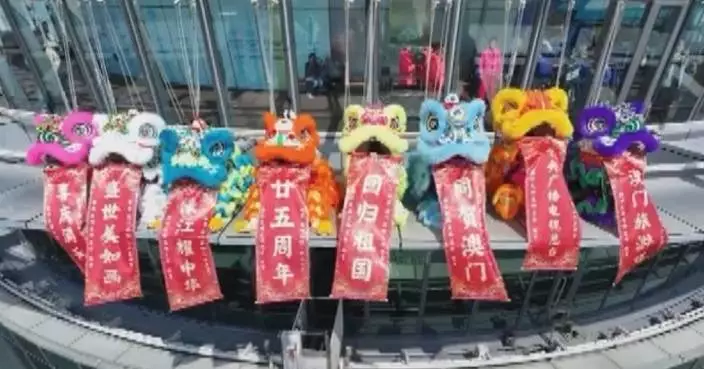The Terracotta Warriors of the Emperor Qinshihuang's Mausoleum Site Museum in Xi'an City of northwest China's Shaanxi Province, once guardians of the past, now serve as both a cultural icon and modern-day "workers".
Discovered in 1974 and listed as a world heritage site by UNESCO in 1987, the army of Terracotta Warriors was built by Emperor Qinshihuang of the Qin Dynasty (221 B.C.-207 B.C.), who unified China for the first time.
In an innovative animation by the China Media Group (CMG), the state broadcaster, AI-generated Terracotta Warriors bring the ancient figures to life, narrating their everyday experiences now that they are stationed in the museum's pits. With humor and pride, they reflect on their "jobs" as both relics and cultural ambassadors.
"Hello, everyone. My name is Ma Yong, or 'Terracotta Warrior,' though Ma is not my surname. Some say my surname is 'Bing,' meaning warrior; others say it's 'Qin,' after the Qin Dynasty; and some even argue it's 'Ying,' the surname of Emperor Qinshihuang himself. After being buried for over two thousand years, my colleagues and I have finally landed stable jobs - overseeing human visitors! I officially began my duties on Oct 1, 1979, and I've been working seven days a week ever since," said one terracotta warrior with a touch of humor.
The museum, which began construction in 1975, opened its iconic exhibition hall above the Pit 1 on Oct 1, 1979, showcasing the incredible discovery of these ancient warriors.
"My colleagues and I have been standing guard for over two thousand years. After the long night of history, we were finally brought to light fifty years ago and proudly became messengers of Chinese civilization, silently telling the stories we have witnessed," Ma Yong continued.
"Welcome to the Emperor Qinshihuang's Mausoleum Site Museum," Ma Yong enthusiastically greeted visitors.
"This photo turns out pretty cool," commented an AI-generated kneeling archer warrior.
"But my chariot is cooler! It's a luxury four-wheel drive, and look at all the people gathering around," exclaimed an AI-generated warrior riding a bronze chariot.
"These days, besides us, another group of 'Terracotta Warriors' is also working to recreate the glory of the Qin army," Ma Yong said, referring to the actors involved in the cultural stage show "The Mighty Qin".
"The Terracotta Warriors work in the pits, and we work on stage. We're both workers, really," said Dong Xuefeng, an actor from the stage production.
"Exactly, we're all workers. But in addition to our daily duties in the pits and exhibition halls, we occasionally travel around the world for business trips. Wherever we go, we're warmly welcomed," Ma Yong said.
Since their discovery in 1974, the Terracotta Warriors have caused a global sensation, with the first international exhibition taking place in Japan in 1976.
"Hello, I'm a Terracotta Warrior from Xi'an, Shaanxi, China," said one AI warrior who was once on the trip to Japan.
From December 1984 to January 1986, Terracotta Warriors continued their world tour with exhibitions held in five European countries - Sweden, Norway, Austria, the United Kingdom, and Ireland.
"This time, our business trip is quite long which will last over a year! We'll be visiting Sweden, Norway, Austria, the United Kingdom, and Ireland," said one AI warrior.
"I wonder when it'll be my turn to go on a business trip," another AI warrior sighed with envy. The life of a Terracotta Warrior isn’t always easy. Standing in the pits for long hours can be exhausting.
"I've been standing all the day, my back is killing me," groaned a general figurine.
On Monday, during an archaeological excavation at Pit 2, archaeologists uncovered two chariot remains and unearthed three clay horses and three figurines, including a newly identified senior military officer figurine, labeled T6G5:02.
"I have heard we're getting a new colleague. His ID is T6G5:02. Let's all welcome him," one AI warrior said with excitement.

Terracotta Warriors, guardians of past, step into modern life with AI technology









